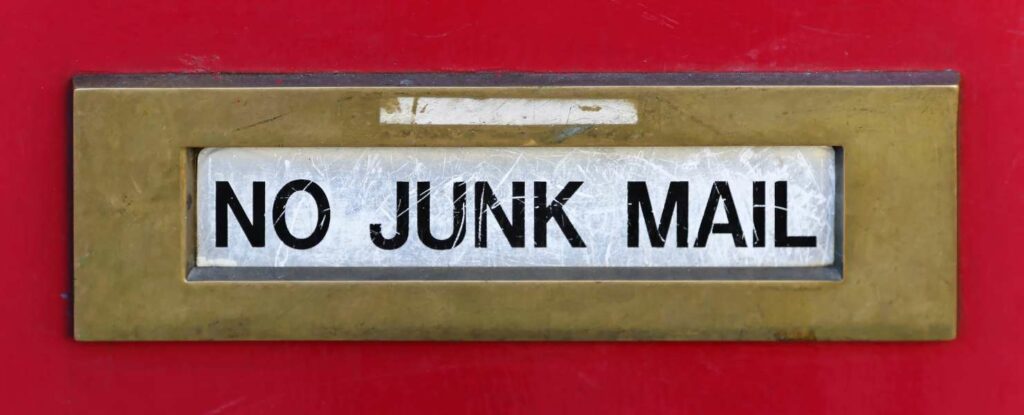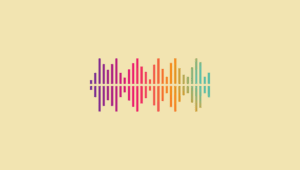What have you received in the mail recently?
If you can recall sweepstakes offers and solicitations more than good stuff—like cards from friends or paychecks—then you’re not alone.
Although we live much more of our lives online nowadays, old-fashioned direct mail is still alive and well. That means that direct mail scams also are still thriving.
Fraud of all types, including mail fraud, led to a $5.8 billion loss for Americans in 2021, a 70% jump over 2020, according to the Federal Trade Commission (FTC). Fraud affected more than 2.8 million consumers in 2021.
Let’s take a closer look at some of the more common direct mail scams and ways to keep yourself—and those you love—from falling victim to them.
Common Direct Mail Solicitations and Red Flags

What are some of the most common ways that scammers will use direct mail to try and get you to respond? Here’s a list:
Sweepstakes or lottery offers.
You’ve won! Or so says the solicitation you received in the mail. Only thing is, you never signed up for this particular sweepstakes. Similarly, you may receive a notice saying that you’ve won a lottery, sometimes even for a lottery in another country.
Special “government” correspondence.
Scammers often will use official-looking seals and wording to make a direct mail piece appear as if it’s coming from the federal government. The language it uses may include some seriousness to encourage you to respond to it and send personal information.
Send a payment, please.
This type of solicitation requests a payment for you in a form other than a credit card. This may include payment via a gift card, cash, cryptocurrency, or a money wire.
We need to confirm your personal information.
A piece of mail asking you to confirm your personal information – which then prompts you to share your credit card number, bank account number, and other information – may also claim that you’ll receive a prize after providing those numbers.
We can see your future.
Sometimes, a piece of mail is purportedly from a religious figure or a psychic, claiming to be able to see your future. Or, they may say that they can reveal your future if you reach out to them and make a payment.
Red Flags in Your Mail

While any of the common direct mail solicitations mentioned above should make you wary of a potential scam, there also are specific red flags that you should watch for when reviewing your mail or reviewing mail for a senior loved one:
- Requests to get personal, sensitive information, such as your bank account number or Social Security number.
- Threatening language that says you must do something or you’ll be charged money or face some sort of punishment.
- Mail that says it’s a “Final Notice” and you didn’t receive any previous notices.
- Notices that are offering you something for free, with no strings attached.
- Requests that you make a payment via cash, a wire transfer, and other forms of payment that can’t be traced.
7 Ways to Protect Yourself and Your Senior Loved One From Direct Mail Scams

Receiving direct mail scams in the mail may be almost inevitable, but losing money through them is not. Here are the best ways to protect yourself from direct mail scams:
1. Get your name and address off of mailing lists.
The FTC has a handy link that explains how to remove an address from receiving junk mail, including credit card offers, insurance offers, and catalogs. There also are ways to request mail to be stopped to someone who has died or someone who is a dependent under your care. Using some of the sites provided by the FTC, you can even request a stop to unsolicited commercial email.
2. Do not share personal financial information by mail, over the phone, or online with anyone you do not know and do not trust.
The simplest way to stay safe from scams is to just say “no”. Don’t answer unknown calls or texts, don’t respond to unknown mail, don’t write your name and social security number in the sky. That third one sound weird? Well, skywriting your name and credit card information isn’t much different than giving it to a stranger who sends a mysterious piece of mail.
3. Pay attention to the details.
Before you get excited about that “free vacation” or another similar offer, read over the details. Often, you’ll find a loophole – or, you’ll find a solicitation for money or other information that you shouldn’t provide.
4. Watch out for signs of fraud shared by scammers themselves.
In a 2020 AARP article, a former fraudster who’s now in prison shared the strategies he used when creating fake sweepstakes notices and similar mail pieces.Working with clients, the pieces he helped write were part of more than 200 illegal sweepstakes from around the world.
Here’s what he said should put you on high alert:
- Mail pieces with signatures at the end, to make them seem more official. The signatures may also have made-up titles listed with them, such as Director of Account Compliance.
- Mail pieces that include your name frequently.
- Words like “guaranteed” and “100% confirmed” to help earn your trust.
- Fake reference numbers created especially for you (or, so they say).
- A way to get you involved with the effort, such as signing a response card or completing a quiz.
Of course, some legit direct mail pieces may use techniques similar to these. It makes sense to be skeptical and verify using the other tips shared here.
5. Research the company.
Just because something you received in the mail looks official doesn’t mean that it is. Before assuming that a mail solicitation is from a legitimate source, do your research. The Better Business Bureau, State Attorneys General office, and the Federal Trade Commission all can provide insights into companies that appear real but actually aren’t. Sometimes, just searching for a company’s name online may give you enough information to know that it isn’t real, as others chime in on their experiences with the scammer.
6. Monitor your loved one’s mail.
If you’re caring for an elderly loved one with diminishing mental or physical health, they may not have the ability to discern what’s a scam from what’s legit. They may assume that some of those offers they are getting are real and respond to them.
Among older adults, lower cognitive function, lower psychological well-being, and lower literacy have been associated with a higher vulnerability to scams.
A better solution is to make it a point to monitor what they get in the mail so you all can respond to the important things and throw everything else out. If you aren’t able to see your senior loved one regularly, some elderly caregiving organizations will handle this task for you.
7. Report suspicious mail.
Let the U.S. Postal Inspection Service know via its Mail Fraud Complaint website if you’ve inadvertently responded to a scam or sent money. The FTC tracks trends related to fraud and abuse. By reporting suspicious mail, you can help them identify these patterns and alert the public. File your complaint online or, call them at 1-877-FTC-HELP (1-877-382-4357).
Although not all junk mail and direct mail is a scam, it’s a good idea to keep your guard up. If you’ve found yourself a victim of these types of scams in the past, don’t be too ashamed to let others know. Unfortunately, you’re neither the first nor the last person to become part of a direct mail scam. By sharing your experience with others, you’ll pass on valuable information that could help others avoid a future scam.







